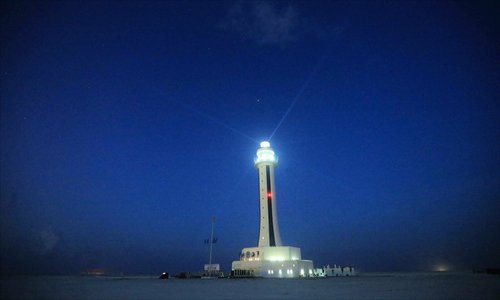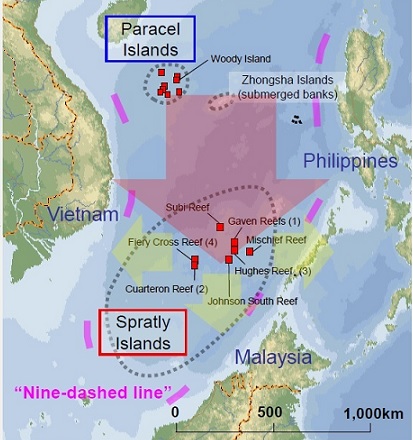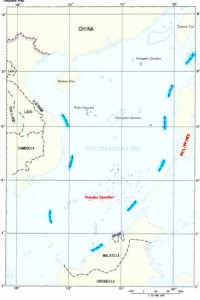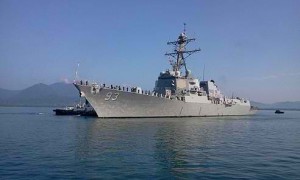
A lighthouse in Subi Reef. Photo from Xinhua News.
As Manila prepares for the visit of Chinese President Xi Jinping two weeks from now, Beijing steps up itscontrol of the Spratlys islands in South China Sea, the latest of which is the announcement that they have started the operation of a marine observation center in the artificial islands that they have built in areas that the Philippines and four other countries claim.
China’s Foreign Ministry Spokesman Lu Kang said in his Nov. 1 press conference said, “Recently, China has begun operating a maritime observation center, a meteorological observatory and a national environmental and air quality monitoring station on reefs of the Nansha Islands. These projects are designed to observe the maritime, hydrological, meteorological conditions and air qualities and provide such services as maritime warning and forecast, tsunami alert, weather forecast, air quality forecast and disaster prevention and relief.”
Nansha islands is the Chinese name of the Spratly Islands, agroup of islands, islets and cays and more than 100 reefs off the coasts of the Philippines, Malaysia, and southern Vietnam. The area is included in China’s nine dash line map which covers almost 95 percent of the whole 3.5 million-square-kilometer body of water.
When the Philippines filed a case (and won) before the Arbitral Court in the Hague in January 2013, China turned the seven reefs (Fiery Cross, Mischief, Subi, Cuarteron, Gaven, Johnson South, and Hughes) it occupied into artificial islands and built military facilities including runways.
Xinhua News Agency said the marine observation centers are located in Yongzhu ( Fiery Cross), Zhubi (Subi) and Mejie (Mischief) reefs.
Lu said, “At the end of July, China’s rescue ship Nanhai Jiu 115 was stationed in the relevant reefs of the South China Sea, which has effectively strengthened the search and rescue forces in the central and southern parts of the South China Sea and provided effective safeguards to navigation security in the South China Sea. It has carried out several search and rescue operations and played an important role.”
The spokesman said the constructions in the disputed features in Spratlys are for the good of the region. “As we have stressed many times, China’s constructions on the reefs and islands of the Nansha Islands aim to improve civil services and provide public goods and services to countries in this region,” he said.

“This is what we primarily wanted to achieve when we started these works on the islands and reefs in the South China Sea, and it is also a solemn pledge China has made to countries in the region and to the international community.
“The projects kicked off this time will provide more public services to countries in the region and more effectively safeguard the security of navigation in the South China Sea and the production and life of the people of littoral countries. As a responsible major country, China will continue to fulfill its obligations and commitments with concrete actions and make due contributions to the security of the South China Sea and for the benefits of people in this region,” Lu concluded.
Who will oppose China’s goodwill towards the people in the Asian region? Just like when they proposed to the United Nations Educational, Scientific and Cultural Organization in 1987 to build a weather radar monitoring system on Fiery Cross Reef ostensibly to help UNESCO in its global oceanic survey. Nobody objected to the noble project.
Today’s marine observation center in Fiery Cross Reef is mounted on a military airbase with a seaport.
There’sa proverb for that: “Give them a finger and they’ll take an arm.”




